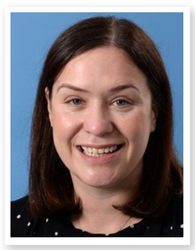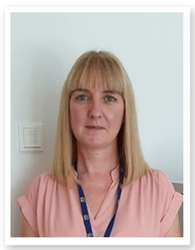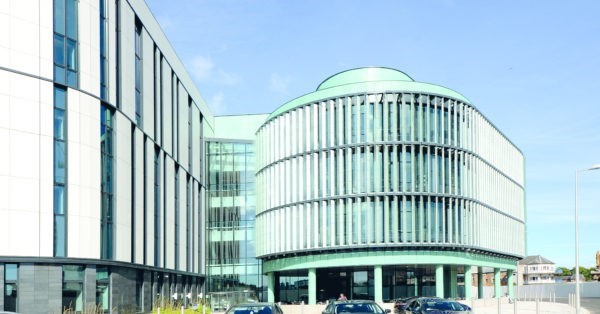Intra-Operative Frozen Section Requests
Pre-Booking a Frozen Section
The requesting clinician must ensure that:
- Pathology Duty Consultant is notified of frozen section request 24 hours in advance of sample collection, via Pathology Specimen Reception on 0141 354 9513 or 0141 354 9514 (89513 or 89514)
- As per national guidance, the department will routinely process requests for frozen section analysis unless the clinician or request form indicate the patient potentially being COVID positive.
- On the day of surgery, theatre staff notify Pathology reception that the frozen section is on its way to the Laboratory.
Failure to pre-book an intra-operative frozen section may result in delays in reporting and in exceptional circumstances the request being declined.
When pre-booking an intra-operative frozen please provide the following details:
- Patient’s name and CHI number
- Requesting clinician
- Theatre name/number including hospital
- Likely time of operation
- Contact number
- Specimen type
The Consultant Pathologist will phone the result to the requesting clinician on the contact number given.
Queen Elizabeth University Hospital (QEUH)
An intra-operative frozen section service is available Monday to Friday from 9:00am to 5:00pm
Golden Jubilee National Hospital (GJNH)
An intra-operative frozen section service is provided, on site at GJNH, Monday to Thursday from 9:00am to 1:00pm. Any cases requiring a frozen section should be recorded on the GJNH theatre lists.
To arrange an intra-operative frozen section out with these times please contact the Duty Pathologist via Pathology Specimen Reception at QEUH on the telephone number below.
These specimens will be transferred to Pathology Department at QEUH for processing and should be sent by taxi to:
Specimen Reception (L3/B/021),
NHSGGC Pathology Department
Level 3, Laboratory Medicine and Facilities Management Building
Queen Elizabeth University Hospital
Tel: 0141 354 9513 (89513) or 0141 354 9514 (89514)
It is the responsibility of staff at GJNH to arrange rapid transfer of these specimens to QEUH as per local protocol.
Glasgow Royal Infirmary (GRI)
An intra-operative frozen section service is available Monday to Friday within normal laboratory working hours, from 9am to 5pm.
This Laboratory is only manned for pre-booked requests. It is, therefore, imperative that frozen section requests for onsite analysis at GRI are received by the Pathology Department more than 24 hours in advance, by phone call.
From time to time an urgent frozen section is required due to an unexpected finding at surgery. The department provides this service, but for intra-operative frozen section requested on site at GRI, a short delay is inevitable to allow staff to travel.
Alternatively the specimen can be sent to QEUH urgently by courier by telephoning:
01412113734 or 01412113674 (Transport Hub) and following the information below for Transporting Urgent Fresh Specimens.
Labelling Frozen Section Specimens
The normal requirements for labelling specimens and request forms apply to frozen sections in addition to the following criteria on the request form:
- Hospital
- Theatre
- Date and time of request.
- Requesting clinician
- Alerts to known or suspected danger of infection
- Clinical History
- Theatre contact number
Transporting Urgent Fresh Specimens
QEUH site:
Fresh (unfixed) specimens should be sent directly to:
Specimen Reception (L3/B/021),
NHSGGC Pathology Department
Level 3, Laboratory Medicine and Facilities Management Building
Queen Elizabeth University Hospital
Tel: 0141 354 9513 (89513) or 0141 354 9514 (89514)
Other Sites
Fresh (unfixed) specimens taken at other sites out with stated service provision at GJNH and GRI should be sent directly to the Pathology laboratory at QEUH by courier.
The courier should be telephoned by theatre staff, telephone Eagle Couriers on 08451231230 at least 30 minutes before the specimen is available on the day of the operation.
The information required by Eagle couriers includes:
- Hospital site
- Theatre collection point
- Advise that this is an “Emergency Pathology Specimen”.
- Codes used for each location should be as per local protocols.
- Please telephone Pathology Specimen Reception on 01413549513 or 01413549514 (89513 or 89514) when the courier is on the way
Fresh/Urgent Paediatric Specimens
Paediatric Rectal biopsies for diagnosis of Hirschsprung’s disease via Acetylcholinesterase histochemistry must be sent fresh (not fixed) as is done for frozen sections (see above).
Please ensure that for all specimens indicative of paediatric neoplasia/cancer/tumour that the paediatric team are notified (89531) in advance of submission and the specimens are submitted fresh/unfixed as is done for frozen sections (see above).
Fresh Lymph Nodes for Suspected Lymphoma
Excised lymph nodes, for suspected lymphoma should be bisected alone their long axis at the time of removal.
Half of the specimen should be placed into a sealed container with buffered formalin. The second half of the specimen should be placed in dry container, without formalin and sent “fresh” to the Pathology Department to allow ancillary testing to be undertaken.
It is particularly important that any Danger of Infection is recorded on the request form.
Follow the instructions above for Transporting Urgent Fresh Specimens.
Orthopaedic Amputations
The orthopaedic theatre should contact Pathology Specimen Reception at least 24hrs before procedure is scheduled on 01413549513 or 01413549514 (89513 or 89514) to request that a dedicated large amputation specimen container is sent to relevant theatre.
Specimens such as amputations that have a high ratio of surface area covered by skin should be sent unfixed. If there is a surgical stocking, leave in place.
Reasons for this are:
- Poor penetration of skin by formalin
- Moving and handling considerations
To contain potential leakage, put the amputation into a large plastic bag or wrap in drapes as appropriate and then put into the amputation container. Never use yellow or orange bags or containers as this corresponds to the code for waste incineration.
Please follow the instructions for transporting urgent fresh specimens above. It is important to advise the courier that this is a large specimen (requires van rather than motorcycle courier).




